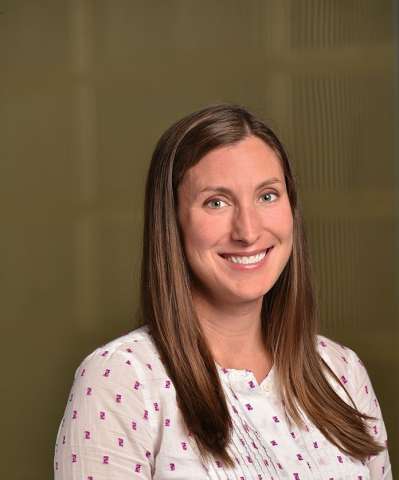
Q&A: Jackie Bertoldo
February 25, 2019
The stereotype of college eating habits is that it’s all ramen, pizza and cheap subs. But Bloomberg Fellow and campus dietitian Jackie Bertoldo knows it doesn’t have to be that way. As assistant director of food choice architecture and nutrition for Stanford Dining, within Stanford University’s Residential & Dining Enterprises, she works with the university’s chefs to serve up food that’s appealing, delicious and good for the Stanford community.
Jackie has worked on other university campuses, including University of Michigan and University of California at Berkeley. She says she loves helping feed students, faculty and staff — in a sense, providing the fuel that enables them to learn, teach, innovate and make a difference in the world. Unhealthy eating is significantly linked to poor grades and test scores and lower educational attainment.
We talked to Jackie, who is working on her doctorate in public health at Johns Hopkins Bloomberg School of Public Health, about her own launch into nutrition, her approach to healthy eating and her efforts to make vegetables more appealing.
How did you become interested in nutrition?
I first got into nutrition while I was playing basketball in college because I wanted to enhance my own health and performance. I was blown away by the impact it had on me. Eating well actually made me feel and perform significantly better. My college didn’t have a nutrition program, but I saw a presentation from a woman who had a degree in public health, and she steered me to the nutrition program at University of Michigan. Having that public health training opened my eyes to the impact that access to nutritional food has on population health.
The obesity epidemic is one of the most important public health challenges that we’re facing, and it’s a fight we’re losing. Despite the overwhelming press and awareness around the issue, we haven’t been making a lot of strides. As a competitive person who loves a challenge, I saw this as an opportunity to address nutrition from a public health perspective. How do we make healthy food accessible and more appealing so that people will want to eat it?
What’s your philosophy as a dietitian?
I’m trained to look at nutrients and talk about calories and fat, but I believe food itself is the language of nutrition. Because I’m food-focused, I’m not going to tell people not to cook their vegetables with oil and salt. Healthy eating shouldn’t be depriving. And the longer we perpetuate that stereotype, the harder it’s going to be to get people motivated to make healthier food choices.
A lot of my work focuses on how to talk about healthy and sustainable foods in ways that align with the motivations of consumers. Most of the research out there says that when people are making food choices, their primary motivation is not selecting the healthiest choice. They want food that is satisfying, filling, enjoyable and tastes good. With that in mind, at Stanford we’re looking at how to align institutional policies, business strategies, and education and outreach efforts to change the mindsets in communities about healthy food.
How do you change someone’s mind to “want” healthy food?
R&DE Stanford Dining has been working with the university’s Mind & Body Lab to reconsider how we label food in the dining halls. At Stanford and several other colleges and universities, we’ve been able to demonstrate that using more delicious-sounding names drives people to eat more vegetables. People report finding their vegetables more satisfying and tasty when they are framed in ways that emphasize sensory experiences, such as “Sizzlin’ Cajun-Style Cabbage” or “Zesty Buffalo-garlic Cauliflower Bites.”
Ultimately, what I’m trying to demonstrate through my work is that you don’t have to make sacrifices to eat healthy. Foods can be delicious, satisfying and fun — all the while being good for you.
Connect With Us
Receive all the latest news from the Initiative by signing up for the American Health Dispatch newsletter, subscribing to the American Health Podcast, and subscribing to our YouTube channel.
Contact Us